Black’s Law Dictionary 1st Edition, page 854:
ORDER. In a general sense. A mandate, precept; a command or direction authoritatively given ; a rule or regulation. I’he distinction between “order” and “requisition” is that the first is a mandatory act, the latter a request. 19 Johns. 7.
In practice. Every direction of a court or judge made or entered in writing, and not included in a judgment, is denominated an “order.” An application for an order is a motion. Code Civil Proe. Cal. § 1003; Code N.Y.§400.
Orders are also issued by subordinate legislative authorities. Such are the English orders in council, or orders issued by the privy council in the
name of the queen, either in exercise of the royal prerogative or in pursuance of an act of parliament. ‘l’he rules of court under the judicature act are grouped together in the form of orders, each order dealing with a. particular subject-matter. Sweet.
An order is also an informal bill of exchange or letter of request whereby the party to whom it is addressed is directed to payor deliver to a person therein named the whole or part of a fund or other property of person making the order, and which is in the possession of the drawee.
It is further a designation of the person to whom a bill of exchange or negotiable promissory note is to be paid.
It is also used to designate a rank, class, or division of men ; as the order of nobles, order at’ knights, order of priests, etc.
In French law. ‘l’he name order (order) is given to the operation which has for its object to fix the rank of the preferences claimed by the creditors in the distribution of the price [arising from the sale] of an immovable affected by their liens. Dalloz, mot “Ordre. ”
Black’s law Dictionary 2nd Edition, pages 857-:
ORDER. ‘ In a general Bense. A’ man date, precept ; a command or direction . au thoritatively given ; a rule or regulation.
The distinction between “order” and “requisi tion” is that the first is a mandatory act, the latter a request. Mills v. Martin, 19 Johns. (N. Y.) 7.
In practice. Every direction of a court or judge made or entered in writing, and not
included in a judgment, is denominated an “order.” An application tor an order is a to have an injunction to quiet his possession till motion. Code Civ. Proc. Cal § 1003; Code N. Y. § 400.
Orders are also issued by subordinate legislative authorities. Such are the English orders in council, or orders issued by the privy council in the
name of the queen, either in exercise of the royal prerogative or in pursuance of an act of parliament. ‘l’he rules of court under the judicature act are grouped together in the form of orders, each order dealing with a. particular subject-matter. Sweet.
An order is also an informal bill of exchange or letter of request whereby the party to whom it is addressed is directed to payor deliver to a person therein named the whole or part of a fund or other property of person making the order, and which is in the possession of the drawee. See Carr v Summerfield, 47 W. Va. 155, 34 S. E. 804; People v. Smith, 112 Mich. 192, 70 N. W. 466, 67 Am. St. Rep. 392; State v. Nevins, 23 Vt. 521.
It is further a designation of the person to whom a bill of exchange or negotiable promissory note is to be paid.
It is also used to designate a rank, class, or division of men; as the order of nobles, order of knights, order of priests, etc.
In French law. ‘l’he name order (order) is given to the operation which has for its object to fix the rank of the preferences claimed by the creditors in the distribution of the price [arising from the sale] of an immovable affected by their liens. Dalloz, mot “Ordre. ”
Black’s Law Dictionary 3rd Edition, page 1298:
ORDER. In a general sense. A mandate, precept; a command or direction authoritatively given ; a rule or regulation. I’he distinction between “order” and “requisition” is that the first is a mandatory act, the latter a request. 19 Johns. 7.
In practice. Every direction of a court or judge made or entered in writing, and not included in a judgment, is denominated an “order.” An application for an order is a motion. Code Civil Proe. Cal. § 1003; Code N.Y.§400.
Orders are also issued by subordinate legislative authorities. Such are the English orders in council, or orders issued by the privy council in the
name of the queen, either in exercise of the royal prerogative or in pursuance of an act of parliament. ‘l’he rules of court under the judicature act are grouped together in the form of orders, each order dealing with a. particular subject-matter. Sweet.
An order is also an informal bill of exchange or letter of request whereby the party to whom it is addressed is directed to payor deliver to a person therein named the whole or part of a fund or other property of person making the order, and which is in the possession of the drawee.
It is further a designation of the person to whom a bill of exchange or negotiable promissory note is to be paid.
It is also used to designate a rank, class, or division of men ; as the order of nobles, order at’ knights, order of priests, etc.
In French law. ‘l’he name order (order) is given to the operation which has for its object to fix the rank of the preferences claimed by the creditors in the distribution of the price [arising from the sale] of an immovable affected by their liens. Dalloz, mot “Ordre. ”
Black’s law Dictionary 7th Edition, pages 1123-1124:
order, n. 1. A command, direction, or instruc tion. 2. A written direction or command deliv ered by a court or judge. – Also termed court order; judicial order.
“An order is the mandate or determination of the court upon some subsidiary or collateral matter arising in an action, not disposing of the merits, but adjudicating a preliminary point or directing some step in the proceed ings . ” 1 Henry Campbell Black, A Treatise on the Law of Judgments § 1, at 5 (2d ed. 1902).
administrative order. 1 . An order issued by a government agency after an adjudicatory hearing. 2. An agency regulation that inter prets or applies a statutory provision.
decretal order (di-kree-tal) . A court of chancery’s interlocutory order that is issued on motion of a party and has the effect of a final decree. See decree nisi under DECRE E .
ex parte order (eks pahr-tee). An order made by the court upon the application of one party to an action without notice to the other.
final order. An order that is dispositive of the entire case. See final judgment under JUDGMENT.
interim order. 1. A temporary court decree that takes effect until something else occurs. 2. See interlocutory order.
interlocutory order (in-tar-Iok-ya-tor-ee) . An order that relates to some intermediate matter in the case; any order other than a final order. • Most interlocutory orders are not appealable until the case is fully resolved. But by rule or statute, most jurisdictions al low some types of interlocutory orders (such as preliminary injunctions and class-certifica tion orders) to be immediately appealed. – Also termed interloc.utory decision; interim order; intermediate order. See appealable de cision under DECISION; COLLATERAL-ORDER DOCTRINE .
minute order. 1. An order recorded in the minutes of the court rather than directly on a case docket. • Although practice varies, tradi tionally when a trial judge is sitting officially, with or without a court reporter, a clerk or deputy clerk keeps minutes. When the judge makes an oral order, the only record of that order may be in the minutes. It is therefore referred to as a minute order. – Also termed minute entry. 2. A court order not directly relating to a case, such as an order adopting a local rule of court. • In this sense, the court is not a single judge acting in an adjudicatory capacity, but a chief judge, or a group of two or more judges, acting for a court in an ad ministrative or some other nonadjudicatory capacity.
preclusion order. An order barring a liti gant from presenting or opposing certain claims or defenses for failing to comply with a discovery order.
show-cause order. An order directing a par ty to appear in court and explain why the party took (or failed to take) some action or why the court should or should not grant some relief. – Also termed order to show cause.
standing order. A forward-looking order that applies to all cases pending before a court. • Some individual judges issue a stand ing order on a subject when there is no local rule bearing on it, often because a rule would not be acceptable to other judges on the court. Standing orders are frequently criti cized because they undermine uniformity of procedural rules, esp. at the local level.
turnover order. An order by which the court commands a judgment debtor to surrender certain property to a judgment creditor, or to the sheriff or constable on the creditor’s be half. • Such an order is usu. directed to property that is difficult to acquire by the ordinary judgment-collection process, such as share certificates and accounts receivable.
3. The words in a draft (such as a check) directing one person to pay money to or deliver something to a designated person. • An order should appear to be the demand of a right as opposed to the request for a favor. See order paper under PAPER. 4. Securities. A customer’s instructions to a broker about h o w and when to buy or sell securities.
all-or-none order. An order to buy a securi ty to be executed either in its entirety or not at all.
alternative order. An order to buy a securi ty by either of two alternatives (e.g., buy a stock at a limited price or buy on a stop order) . – Also termed either-or order.
buy order. An investor’s instruction to pur chase stock.
day order. An order to buy or sell on one particular day only. Cf. open order.
discretionary order. An order to buy or sell at any price acceptable to the broker.
either-or order. See alternative order.
fill-or-kill order. An order that must be executed as soon as it reaches the trading
floor. • If the order is not filled immediately, it is canceled.
limit order. An order to buy or sell at a specified price, regardless of market price. Cf. no-limit order.
market order. An order to buy or sell at the best price immediately available on the mar ket. – Also termed order at the market.
matched order. An order to buy and sell the same security, at about the same time, in about the same quantity, and at about the same price.
no-limit order. An order to buy or sell secu rities with no limits on price. Cf. limit order.
open order. An order that remains in effect until filled by the broker or canceled by the customer. Cf. day order.
order at the market. See market order.
percentage order. An order to buy or sell a stated amount of a certain stock after a fixed number of shares of the stock have traded.
scale order. An order to buy or sell a securi ty at varying price ranges.
sell order. An investor ‘ s instruction to sell stock.
split order. An order directing a broker to sell some stock at one price and some stock at another price.
stop order. An order to buy or sell when the security’s price reaches a specified level (the stop price) on the market. • By fixing the price beforehand, the investor is cushioned against stock fluctuations. – Also termed stop-loss order.
time order. An order that becomes a market or limited-price order at a specified time.
.
Black’s Law Dictionary 8th Edition, pages 3477-3481:
order,n.1. A command, direction, or instruction. See MANDATE(1).2. A written direction or command delivered by a court or judge. • The word generally embraces final decrees as well as interlocutory directions or commands. — Also termed court order; judicial order. See MANDAMUS. [Cases: Federal Civil Procedure 928; Motions 46. C.J.S. Motions and Orders §§ 1–3, 13, 50, 59.]
“An order is the mandate or determination of the court upon some subsidiary or collateral matter arising in an action, not disposing of the merits, but adjudicating a preliminary point or directing some step in the proceedings.” 1 Henry Campbell Black, A Treatise on the Law of Judgments§ 1, at 5 (2d ed. 1902).
“While an order may under some circumstances amount to a judgment, they must be distinguished, owing to the different consequences flowing from them, not only in the matter of enforcement and appeal but in other respects, as, for instance, the time within which proceedings to annul them must be taken. Rulings on motions are ordinarily orders rather than judgments. The class of judgments and of decrees formerly called interlocutory is included in the definition given in [modern codes] of the word ‘order.’ ” 1 A.C. Freeman, A Treatise of the Law of Judgments § 19, at 28 (Edward W. Tuttle ed., 5th ed. 1925).
administrative order. 1. An order issued by a government agency after an adjudicatory hearing. [Cases: Administrative Law and Procedure 489. C.J.S. Public Administrative Law and Procedure §§ 147–148.] 2. An agency regulation that interprets or applies a statutory provision. [Cases: Administrative Law and Procedure 381. C.J.S. Public Administrative Law and Procedure §§ 87, 91.]
affiliation order.See filiation order.
alternative order.An order commanding the person to whom it is directed either to do a specific thing or to show cause why the court should not order it to be done.
common order.See conditional judgment under JUDGMENT.
decretal order (di-kree-t<<schwa>>l). A court of chancery’s interlocutory order that is issued on motion of a party and has the effect of a final decree. See decree nisi under DECREE. [Cases: Equity 428–430.]
docket order.A court order memorialized only as an entry on the docket sheet.
ex parte order (eks pahr-tee). An order made by the court upon the application of one party to an action without notice to the other.
filiation order.Family law. A court’s determination of paternity, usu. including a direction to pay child support. • Governments usu. seek filiation orders so that some or all of the public funds spent on the child’s welfare can be recovered from a nonmarital child’s father. Until the early 20th century, municipalities, not the state, had the legal duty to support the poor, including unwed mothers and their children. In some states, two judges had to determine who an unacknowledged child’s father was before the municipality could recover its expenditures. — Also termed affiliation order; order of filiation.
final order.An order that is dispositive of the entire case. See final judgment under JUDGMENT. [Cases: Federal Civil Procedure 928; Motions 51. C.J.S. Motions and Orders §§ 2, 52–53, 55.]
foreign support order.See SUPPORT ORDER.
health-insurance order.See HEALTH-INSURANCE ORDER. income-withholding order.See INCOME-WITHHOLDING ORDER.
interim order. 1. A temporary court decree that takes effect until something else occurs. [Cases: Federal Civil Procedure 928; Motions 51. C.J.S. Motions and Orders §§ 2, 52–53, 55.] 2. See interlocutory order.
interlocutory order (in-t<<schwa>>r-lok-y<<schwa>>-tor-ee). An order that relates to some intermediate matter in the case; any order other than a final order. • Most interlocutory orders are not appealable until the case is fully resolved. But by rule or statute, most jurisdictions allow some types of interlocutory orders (such as preliminary injunctions and class-certification orders) to be immediately appealed. — Also termed interlocutory decision; interim order; intermediate order. See appealable decision under DECISION; COLLATERAL-ORDER DOCTRINE. [Cases: Appeal and Error 67; Federal Courts 572, 576; Motions 51. C.J.S. Appeal and Error § 84; Motions and Orders§§ 2, 52–53, 55.]
minute order. 1. An order recorded in the minutes of the court rather than directly on a case docket. • Although practice varies, traditionally when a trial judge is sitting officially, with or without a court reporter, a clerk or deputy clerk keeps minutes. When the judge makes an oral order, the only record of that order may be in the minutes. It is therefore referred to as a minute order. — Also termed minute entry. [Cases: Appeal and Error 123; Courts 107. C.J.S. Appeal and Error § 150; Courts§§ 165, 175; Criminal Law§ 1665.] 2. A court order not directly relating to a case, such as an order adopting a local rule of court. • In this sense, the court is not a single judge acting in an adjudicatory capacity, but a chief judge, or a group of two or more judges, acting for a court in an administrative or some other nonadjudicatory capacity. [Cases: Motions 56(1). C.J.S. Motions and Orders §§ 59–60, 62.]
modification order.See MODIFICATION ORDER.
preclusion order.An order barring a litigant from presenting or opposing certain claims or defenses for failing to comply with a discovery order. [Cases: Federal Civil Procedure 1278; Pretrial Procedure 44.1.]
pretrial order.See PRETRIAL ORDER.
protective order.See PROTECTIVE ORDER.
qualified domestic-relations order.See QUALIFIED DOMESTIC-RELATIONS ORDER.
receiving order.A court’s direction to a bankruptcy receiver to take some action.
restraining order.See RESTRAINING ORDER.
separation order.A court order granting a married person’s request for a legal separation. See SEPARATION AGREEMENT(1).
show-cause order.An order directing a party to appear in court and explain why the party took (or failed to take) some action or why the court should or should not grant some relief. — Also termed order to show cause; rule to show cause; show-cause rule. [Cases: Motions 24. C.J.S. Motions and Orders §§ 20–23.]
standing order.A forward-looking order that applies to all cases pending before a court. • Some individual judges issue a standing order on a subject when there is no local rule bearing on it, often because a rule would not be acceptable to other judges on the court. Standing orders are frequently criticized because they undermine uniformity of procedural rules, esp. at the local level. Cf. standing rule under RULE(3).
supervision order.Family law. A court’s order placing a child or young person under the supervision of a child-welfare agency or a probation officer in a case of neglect, abuse, or delinquency.
support order.See SUPPORT ORDER.
temporary order.A court order issued during the pendency of a suit, before the final order or judgment has been entered.
temporary restraining order.See TEMPORARY RESTRAINING ORDER.
turnover order.An order by which the court commands a judgment debtor to surrender certain property to a judgment creditor, or to the sheriff or constable on the creditor’s behalf. • Such an order is usu. directed to property that is difficult to acquire by the ordinary judgment-collection process, such as share certificates and accounts receivable. [Cases: Execution 402. C.J.S. Executions § 390.]
visitation order.See VISITATION ORDER.
3.Parliamentary law. The principles and practices of parliamentary law; the conduct of business according to those principles and practices; DECORUM. See IN ORDER; OUT OF ORDER. 4.Parliamentary law. An item of business, or an agenda or series of such items <call for the orders of the day>. See AGENDA.
general order.An order of the day other than a special order. See order of the day (1). Cf. special order.
order of business. 1.AGENDA. 2. The sequence in which a meeting considers its business.
“A settled order of business is, however, necessary for the government of the presiding person, and to restrain individual members from calling up favorite measures, or matters under their special patronage, out of their just turn. It is useful also for directing the discretion of the house, when they are moved to take up a particular matter, to the prejudice of others having priority of right to their attention in the general order of business.” Thomas Jefferson, A Manual of Parliamentary Practice 30 (1801).
order of the day. 1. An item of business scheduled for consideration at a certain upcoming meeting, at a certain time, or in a certain order. • An order of the day is either a general order or a special order. 2. The daily order of business. See order of business.
special order.An order of the day scheduled for consideration at a certain time, and that outranks and interrupts any other business except another special order scheduled earlier for the same time. See TIME CERTAIN.
5.Parliamentary law. A vote that assigns a duty to an officer, employee, or other agent, customarily in the form, “Ordered, That ….” 6.Parliamentary law. RULE(3).7.Commercial law. The words in a draft (such as a check) directing one person to pay money to or deliver something to a designated person. • An order should appear to be the demand of a right as opposed to the request for a favor. See order paper under PAPER. [Cases: Bills and Notes 4. C.J.S. Bills and Notes; Letters of Credit§ 10.] 8.Securities. A customer’s instructions to a broker about how and when to buy or sell securities.
all-or-none order.An order to buy a security to be executed either in its entirety or not at all.
alternative order.An order to buy a security by either of two alternatives (e.g., buy a stock at a limited price or buy on a stop order). — Also termed either-or order.
buy order.An investor’s instruction to purchase stock.
day order.An order to buy or sell on one particular day only. Cf. open order. discretionary order.An order to buy or sell at any price acceptable to the broker. either-or order.See alternative order.
fill-or-kill order.An order that must be executed as soon as it reaches the trading floor. • If the order is not filled immediately, it is canceled.
limit order.An order to buy or sell at a specified price, regardless of market price. Cf. no-limit order.
market order.An order to buy or sell at the best price immediately available on the market. — Also termed order at the market.
matched order.An order to buy and sell the same security, at about the same time, in about the same quantity, and at about the same price.
no-limit order.An order to buy or sell securities with no limits on price. Cf. limit order.
open order.An order that remains in effect until filled by the broker or canceled by the customer. Cf. day order.
order at the market.See market order.
percentage order.An order to buy or sell a stated amount of a certain stock after a fixed number of shares of the stock have traded.
scale order.An order to buy or sell a security at varying price ranges.
sell order.An investor’s instruction to sell stock.
split order.An order directing a broker to sell some stock at one price and some stock at another price.
stop order.An order to buy or sell when the security’s price reaches a specified level (the stop price) on the market. • By fixing the price beforehand, the investor is cushioned against stock fluctuations. — Also termed stop-loss order; stop-limit order. [Cases: Brokers 24(1). C.J.S. Brokers §§ 71–72.]
time order.An order that becomes a market or limited-price order at a specified time.
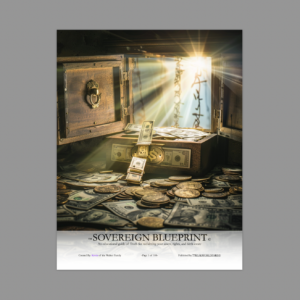
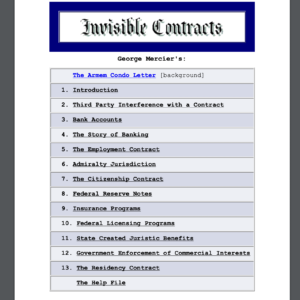
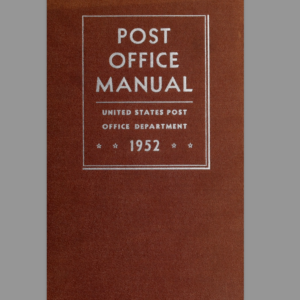
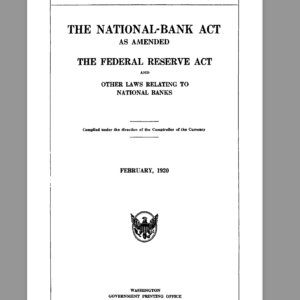

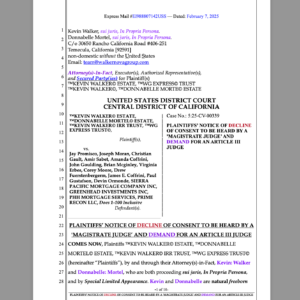
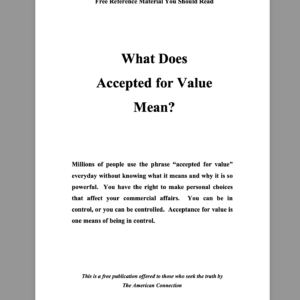

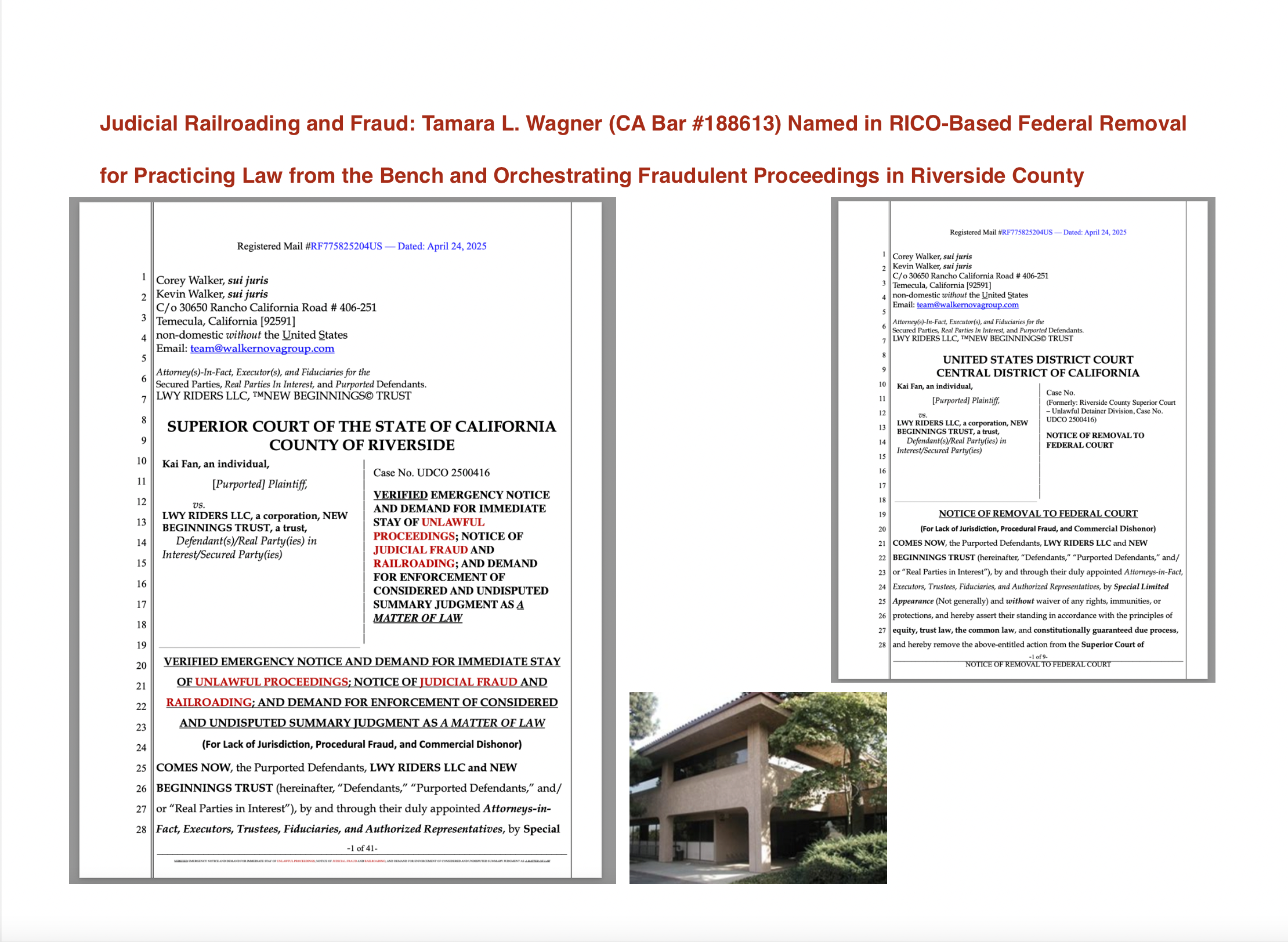

Recent Comments